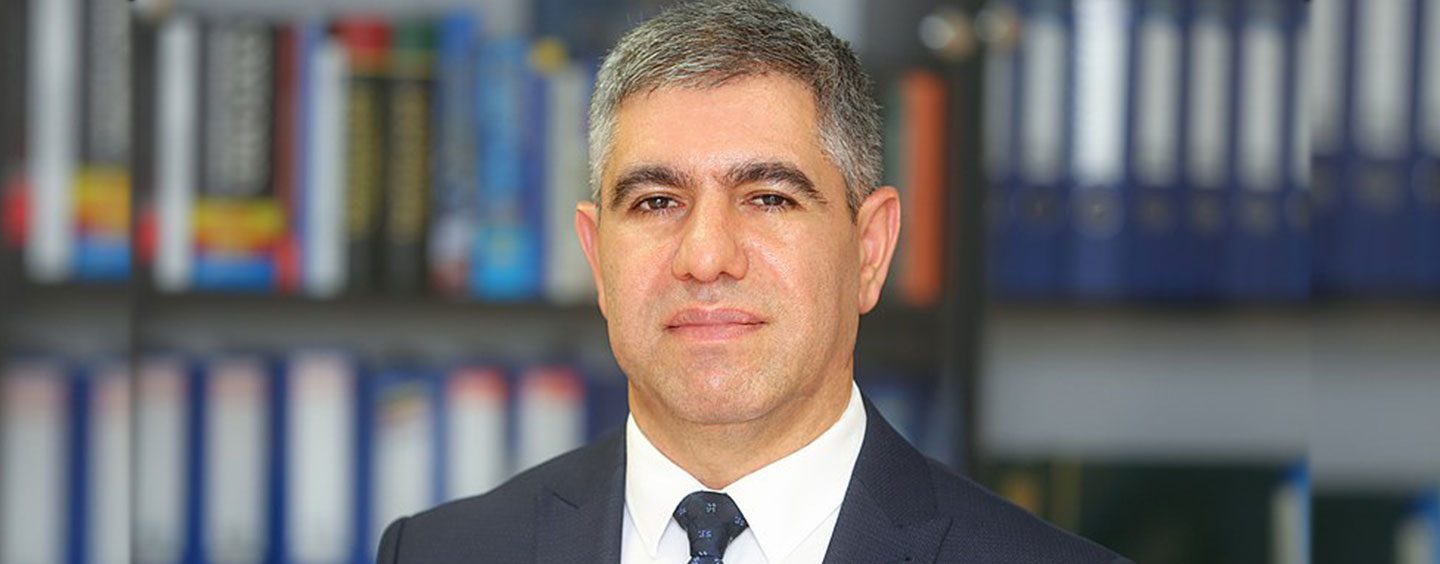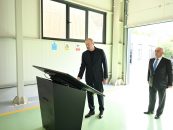
Karabakh Economy: New Driver for Sustainable Economic Development in Azerbaijan
Dr. Vugar Bayramov, Member of the Parliament of Azerbaijan
Karabakh will become one of the main drivers of economic development in Azerbaijan. The 44-day Patriotic War was primarily the result of Azerbaijan’s successful policy in the fields of economic development, state, and military services. This victory has affected the economic development of Azerbaijan as well as regional states and established new economic priorities for our country. Several measures are already being taken to restore our liberated territories in the shortest period. Thus, 2.2 billion manat will be allocated from the state budget to create relevant infrastructure in the Karabakh region and ensure its integration into the country’s economy. At the same time, the establishment of the Karabakh Revival Fund, by the decree of President Ilham Aliyev on January 4, 2021, will support the restoration and reconstruction of the liberated territories as well as its transformation into a sustainable economy and a prosperous region.
In general, Azerbaijan is entering a new stage of construction. At this stage, it is expected that the great economic potential of our liberated lands will be realized not only at the expense of the state budget but also at the expense of income retrieving from private sources.
Karabakh Development Model – the beginning of a new economic development
As President Ilham Aliyev noted, a development model must be established so that it can be ensured for the successful development of our country by transferring it to other lands. The new economic model will include the formation of modern standards of infrastructure in liberated lands, and this process has already begun.
It should be noted that the infrastructure formed in the liberated territories will meet international standards. Thus, the activities carried out in relation to the formation of an international airport in Fuzuli, the construction of the Fuzuli-Shusha road, the provision of utilities in accordance with international standards, and the expansion of other infrastructure indicate the work being done. This will allow the formation of the economy in our liberated territories corresponding to modern standards. At the same time, it is planned to introduce a new model. This model includes tax incentives, incentive mechanisms, as well as the creation of special zones to attract foreign investment. Along with such measures, the government has already developed a special concept for the economic development of the liberated territories. The concept, which will cover four important areas, also provides for the implementation of incentives in these areas. This promotion is expected to be aimed at both entrepreneurs and citizens. In particular, today it is a priority to expand activities to attract funds to the territories liberated from occupation. Stimulation packages will be applied in this context. The goal is to transfer the development model that will be formed here to other parts of Azerbaijan. It also means the formation of economic management following modern challenges. The infrastructure, economic management, and business environment in the liberated areas will be formed in accordance with modern challenges and international standards. It is expected that the liberated territories will become one of the main drivers of economic development in Azerbaijan in the coming years.
Revival of Karabakh – sustainable economic development
The revival of Karabakh and the rich natural resources of this region will support the development of a sustainable economy by creating a basis for the development of the non-oil sector in our country. Thus, it is planned to develop tourism, agriculture, and industry in our liberated territories. If we review the economic indicators of our liberated regions, we can see that the share of the Upper Karabakh and Kalbajar-Lachin economic regions in the country’s gross domestic product (GDP) is not in single digits. Thus, in terms of economic potential, in 2019 the Upper Karabakh economic region produced goods worth 637 million 70 thousand AZN, including the Aghdam region; 172 million 934 thousand AZN; Fuzuli region, 138 million 652 thousand AZN. In the Kalbajar-Lachin economic region, which covers four regions, only 97 million, 838 thousand AZN worth of products were produced. The share of Upper Karabakh in the output of the main sectors of the country’s economy, which includes seven regions, is 0.7 percent, and the Kalbajar-Lachin economic region is only 0.1 percent. This means that the share of our long-occupied territories in the overall economy is not fully digital, only 0.8 percent. However, there is enough economic potential in these areas. As a result of the realization of this potential, the share of our territories in GDP will increase.
We forecast that production will be formed in those regions very soon after the recovery process, and the economic value will increase almost eightfold. For more than 27 years the occupation of our territories has not allowed us to use this potential, but the current reality will allow us to turn this potential into economic value and a special contribution to GDP budget revenues in a short time. This will allow Azerbaijan to achieve faster economic growth in the coming years.
In general, agriculture and tourism will be priority sectors for our liberated territories. At the same time, the industrial potential of these areas will be assessed. All this will be linked to the Great Return Plans. It is expected that a special incentive mechanism will be applied for the development of our liberated regions. It would be expedient to introduce tax incentives for entrepreneurs and expand access to low-interest loans. Long-term tax incentives can attract more private and foreign investment.
Agricultural potential of Karabakh
The lands of our liberated territories have great agricultural potential due to their high productivity. Especially in these areas, there are ample opportunities for the development of viticulture, tobacco, cotton, cocoons, fruits, and vegetables, melons, and livestock. These opportunities will also create conditions for the restoration of agriculture in Karabakh. Thus, there are broad prospects for the restoration of vine-growing in Agdam, Agdara, Jabrayil, and Zangilan districts. There will be a general increase in cotton fields in the Agdam and Fuzuli regions. Also, in these two regions, there will be a large volume of vegetable production (5-6 percent of the country’s vegetables). Tobacco production will be restored in Zangilan, Gubadli, and Lachin. The region as a whole has a tradition of cocoons. Large livestock farms will be formed in Kalbajar, Lachin, and Gubadli districts. The region also has great prospects for beekeeping.
In general, a comprehensive action plan is envisaged for the restoration of agriculture in our liberated lands. For this, first of all, the lands in the area must be restored, amelioration and irrigation systems must be installed to make them suitable for agriculture. At the same time, the purpose of these lands should be recorded and a supply system should be established.
As for the measures to be taken, according to the Ministry of Agriculture, 155,000 hectares of arable land will be involved in the total agricultural turnover. After the restoration, the crop turnover is expected to be 8% of the country’s total crop turnover. The gross output will be organized at the rate of 8% of the current volume of agriculture, in both livestock and crop production.
The rich water resources of our liberated territories will support the development of agriculture. The richness of freshwater resources in the Kalbajar and Lachin regions, in particular the existence of the Sarsang Reservoir, the highest reservoir in Azerbaijan (125 meters) with a total capacity of 560 million cubic meters, will increase the development opportunities of the agricultural sector.
The liberation of the Jabrayil region from the occupation in October 2020, the full control of the state border with the Islamic Republic of Iran, is a very important event in terms of completing the construction of power plants on the Khudaferin and Maiden Tower hydroelectric power stations. These projects will play a special role in both providing electricity and irrigating the liberated areas.
There are also opportunities for the development of alternative energy sources in Karabakh. Thus, due to strong winds in the Kalbajar-Lachin zone, it is planned to build wind stations there, and solar stations in the Zangilan-Jabrail zone due to the sufficient amount of solar radiation during the year. In this regard, the government has given relevant instructions. The announcement of Karabakh as a “green energy” zone will also support the development of the non-oil sector in the future.
Tourism potential of Karabakh
The tourism potential of Karabakh is very rich—there are opportunities for the development of eco-tourism, mountain tourism, winter tourism, health tourism. The climate, geography, and nature of these areas, as well as the presence of historical and religious monuments, are attractive for the development of inbound tourism.
The liberated Kalbajar region is one of the few regional areas in the South Caucasus in terms of tourism development. Because it is possible to develop this area in summer and winter, both historically, religiously, and medically, in the direction of tourism. Tourism potential is also high in other liberated areas. For example, Azykh Cave, located near one of the oldest settlements in the Fuzuli region, is one of the places that will attract tourists. It is expected that this will have a direct impact on the number of tourists visiting the country after the recovery process and the pandemic, which will allow the number of tourists to reach 4 million annually. Before the pandemic, more than 5 million of our citizens went abroad as tourists a year. Now, some of them are expected to visit the liberated territories, which will allow the currency to remain in the country.
In general, the surface and underground natural resources in the liberated territories will bring great economic benefits to our country. Systematic restoration and reconstruction of our liberated territories will further increase the economic potential of the region. At the same time, attracting state and non-state investments in the reconstruction of Karabakh will create a basis for sustainable economic growth. In short, the economic development of Karabakh will not only accelerate the economic development of our country but also strengthen political and economic ties in the region.





